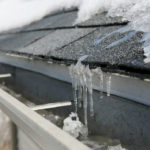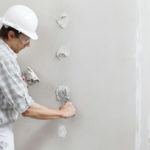
How To Quickly Get Rid Of Carpenter Bees
Carpenter bees are a common sight in many parts of the world. These bees are large and often mistaken for bumblebees. However, they are not harmless like their furry cousins. Carpenter bees are notorious for causing damage to wooden structures and furniture, and their constant buzzing can be a nuisance. You’ve come to the right place if you’re tired of dealing with these pesky insects. In this ultimate guide, we’ll cover everything you need to know about eliminating carpenter bees for good. From identifying these bees and their habits to exploring various methods for getting rid of them, we’ve got you covered. We’ll even delve into some natural remedies you can try if you prefer an eco-friendly approach. So, whether you’re a business owner or own your own home, this guide will equip you with the tools you need to tackle a carpenter’s bee infestation head-on. Let’s get started and buzz off those carpenter bees once and for all!
Identifying Carpenter Bees
Carpenter bees are big, black, and yellow bees that can reach up to an inch long. They are often mistaken for bumblebees, but there are some key differences. Unlike bumblebees, carpenter bees have shiny, hairless abdomens. They also have a distinctive buzzing sound that can be heard from a distance. Carpenter bees are solitary bees that do not live in hives. Instead, they make their nests in wooden structures, such as decks, eaves, and fences. Female carpenter will sting, but they are not very aggressive and will only do so if provoked.
The Damage Carpenter Bees Can Cause

Carpenter bees can create a lot of damage to wooden structures if left unchecked. They create their nests by drilling holes into the wood, which can weaken the structure over time. Female carpenter bees will lay their eggs in these holes, and the larvae will feed on the wood as they grow. This can cause damage and even collapse if the infestation is severe. Carpenter bees can also attract other pests, such as woodpeckers, who will feed on the larvae and cause further damage.
Carpenter Bee Prevention
Preventing carpenter bee infestations is the best way to avoid the damage they can cause. Here are some tips for preventing carpenter bees from nesting in your home or business:
Paint or stain all exposed wood surfaces to make them less attractive to carpenter bees.
Fill any cracks or holes in wooden structures to make it more difficult for carpenter bees to drill nesting holes.
Use pressure-treated wood for outdoor structures, as it is less attractive to carpenter bees.
Replace any damaged or rotting wood to prevent carpenter bees from nesting in it.
Hang shiny objects, such as CDs or aluminum foil, near wooden structures to deter carpenter bees.
Natural Remedies for Carpenter Bees
If you prefer an eco-friendly approach to pest control, there are several natural remedies you can try to get rid of carpenter bees. Here are some of the most effective:
Essential oils: Carpenter bees are repelled by the strong scent of certain essential oils, such as citronella, lavender, and peppermint. Mix a few drops of your oil with water and spray it on wooden surfaces to repel carpenter bees.
Diatomaceous earth: This natural substance is made from fossilized diatoms and effectively kills carpenter bees. Sprinkle it on wooden surfaces or inside their nesting holes to kill the bees.
Boric acid: Boric acid is a natural insecticide safe for humans and your pets, but deadly to carpenter bees. Mix it with some water and spray it on wooden surfaces to kill carpenter bees and their larvae.
Chemical Treatments for Carpenter Bees
If natural remedies are ineffective, you may need to use chemical treatments to eliminate carpenter bees. Here are some common chemical treatments:
Insecticide sprays can be applied directly to carpenter bees or their nesting holes to kill them. Make sure you wear protective clothing and follow the instructions carefully.
Dust insecticides: These are powders that can be applied directly to carpenter bee nesting holes to kill them. They are usually more effective than sprays but can be messy to use.
Fumigation: This last resort option involves sealing off the infested area and using a gas to kill the carpenter bees.
Hiring a Pest Control Professional for Carpenter Bee Removal
If you have a more severe carpenter bee infestation or are uncomfortable using chemical treatments, hiring a pest control professional may be best. A professional will have the skills and tools to safely and effectively remove carpenter bees from your property. They may also be able to provide preventative measures to avoid future infestations.
Carpenter Bee Traps

Carpenter bee traps are another effective way to get rid of these pests. These traps are designed to lure carpenter bees into a container where they will get trapped and eventually die. Here are some tips for using carpenter bee traps:
Place the traps near areas where carpenter bees are active, such as wooden structures or flowers.
Use traps that are designed specifically for carpenter bees, as they are more effective than general insect traps.
Empty the traps regularly to prevent them from becoming full and attracting other pests.
Maintaining Carpenter Bee-Free Homes and Yards
Once you have eliminated a carpenter bee infestation, it is important to prevent future infestations. Here are some tips for maintaining a carpenter bee-free home and yard:
– Regularly inspect wooden structures for signs of damage or infestation.
– Paint or stain all exposed wood surfaces to make them less attractive to carpenter bees.
– Fill any cracks or holes in wooden structures to make it more difficult for carpenter bees to drill nesting holes.
– Replace any damaged or rotting wood to prevent carpenter bees from nesting in it.
– Hang shiny objects, such as CDs or aluminum foil, near wooden structures to deter carpenter bees.
Conclusion
Carpenter bees can be a nuisance and cause major damage to wooden structures if left unchecked. However, with the knowledge and tools provided in this guide, you can eliminate carpenter bees from your home or business and prevent future damage. Whether you choose natural remedies, chemical treatments, or hire a professional, the key is to take action and buzz off those carpenter bees once and for all!



